by Robbie Laird

I like to work in a variety of watermedia — from painting en plein air with watercolor to creating a watermedia monotype, or a series of large watermedia paintings in my studio.
After many years of painting, I believe the most valuable initial step in my painting process is unseen and evolves over time. Unpredictably, something stops me in my tracks, and I see or think about it in a new way. This is the seed that, once planted, germinates over time to become a concept that I want to express.
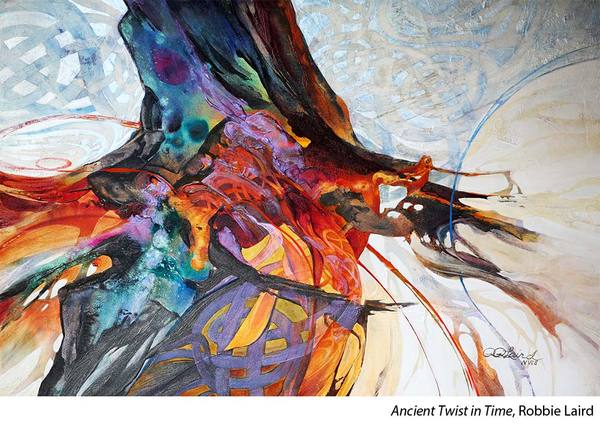
Sometimes the growth of the idea is lengthy and continues to develop through a series of many paintings. Other times it is nearly instantaneous, and the concept, content, and process are clear to me almost immediately. The most important first part of my process is to be eager to paint something that is meaningful to me. It is also important to have a process that I know is tried and true for me and has brought success. I choose one of those favorite processes depending on my specific goals for a painting.
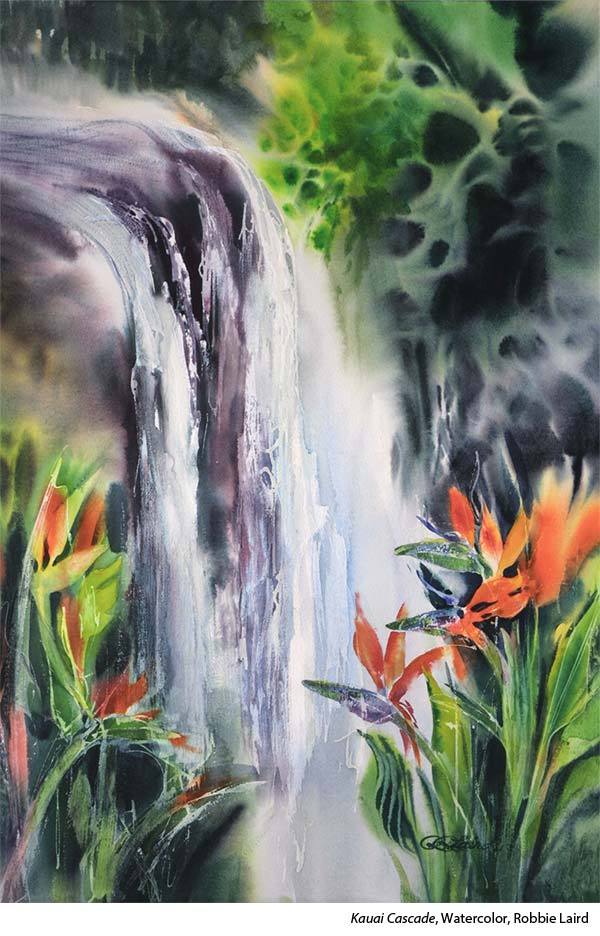
I came up with what is now a favorite process through experimentation and trial and error while I was working on a series of large watermedia paintings in my studio. I find this process works equally well for a variety of subjects and I really enjoy it because it provides me with reliable satisfaction as well as unexpected challenges that keep me interested throughout the entire painting process.
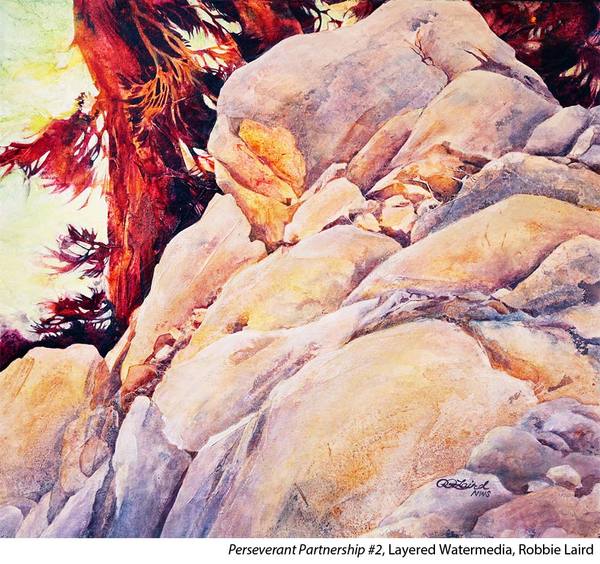
I begin by surrounding myself with my personal resources: my sketches, notes, value studies, color studies, and my digital photos — everything that I have collected about the subject or concept I’m trying to depict so that I am surrounding myself with my own sources of inspiration. Usually a series begins when I realize that I want to say more than I can in one painting. To save myself from overpainting or cramming too much into one piece, I decide in the beginning this needs to be a series.
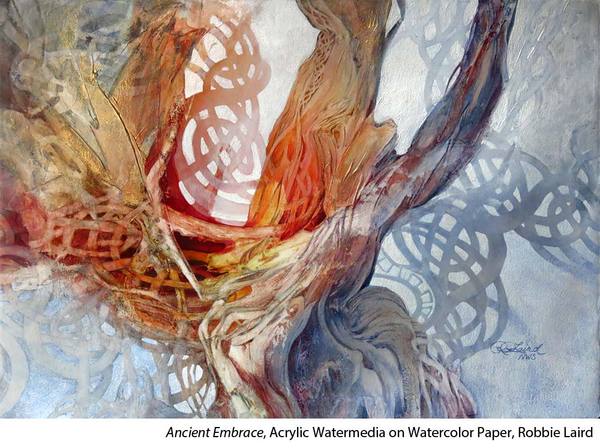
An example of using this is my series of layered paintings of trees and rocks (see Time and Time Again, Summer Day, and Perseverant Partnership #2).
Because this process requires layering heavy mediums that require drying time between layers, it works well when I work on more than one painting at the same time.
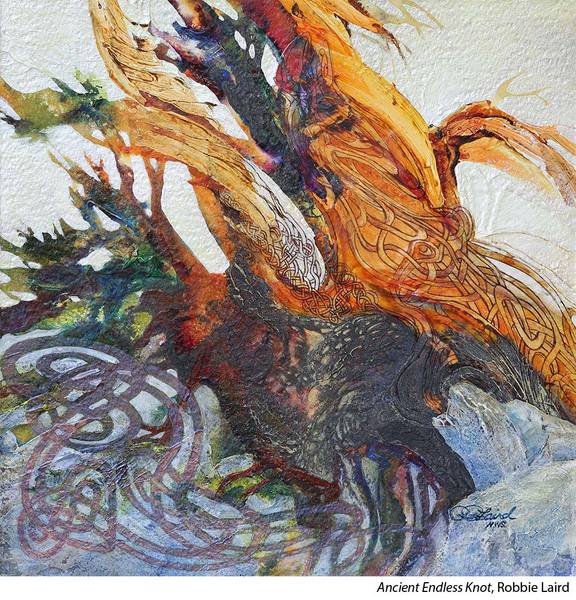
My initial concept was the enduring relationship between trees and rocks. Through several series that concept evolved to include the connection between abstract designs in nature and culturally created abstract designs. In this series the specific content is the Ancient Bristlecone Pine Trees, and the Celtic Endless Knot.
To start, I select my substrate — 300-lb. watercolor paper, heavy illustration board, or other — and cut four to six to the same size.
First layer: RHYTHM to give underlying unifying texture.
Using the rhythm of my subject (the forms created by the ancient trees), I apply heavy swaths and gestural marks of gesso and heavy acrylic Golden mediums to the substrate. I repeat this on each of the prepared substrates, creating a unique variation of placement and proportion for each. I then let the surface dry overnight.

Second layer: COLOR to establish mood/tone and unity.
I charge wet paint into selectively wet areas, mixing colors on paper to add to the rhythmic underlying abstract design. For this, I use various watercolors, inks, and fluid or high-flow acrylics.

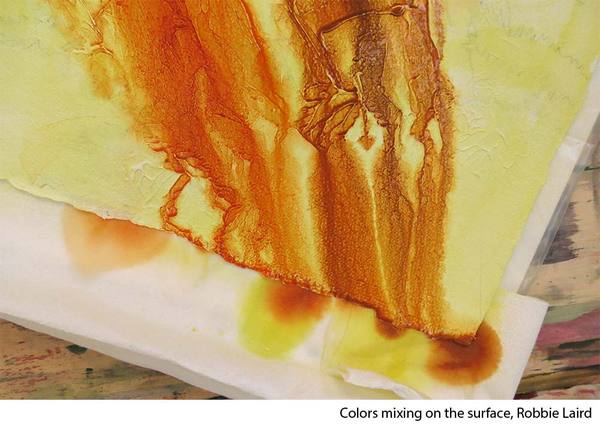
Third layer: EMPHASIS — placement and proportion of elements.
With rhythm and mood established, I begin the exciting challenge of selecting which of my sketches will be developed for each of the paintings. I turn the series of underpaintings in all four orientations and look for naturally occurring matches.
Because the drawings and rhythmic marks on the substrates have all been made by me, I am continually pleasantly surprised how they work together, and in ways I never would have achieved without allowing for the unexpected. This part is really enjoyable because I consider ideas using parts of one sketch with another sketch, repositioning and playing with the information I have gathered to create a unique piece that’s part of the whole concept. The resulting painting is never an exact replica of one of my photo images.


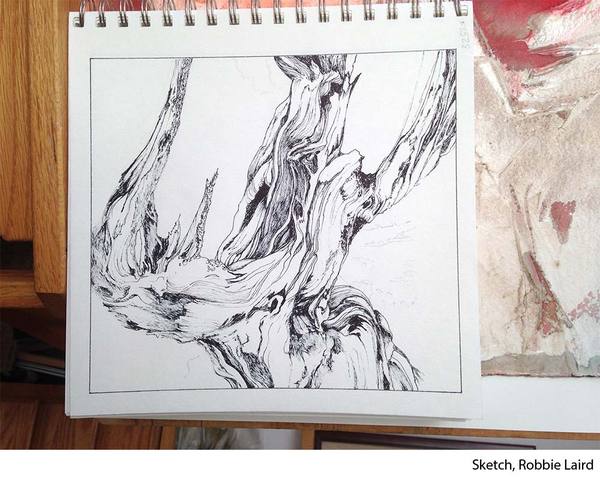

Fourth layer: DESIGN STRUCTURE — shapes, space, and values.
After considering various possibilities, I transfer any part of my drawing to the painting and continue to strengthen the design by additional division of shapes and space. Values are planned to link passages of light and dark.
Fifth layer: WORKING TO COMPLETION — step by step.
I draw with watercolor pencils, paint with acrylics and other water-based media. As one painting needs to dry, I work on another. Until, one by one, they all evolve individually and as an integral part of the development of the whole series. I love working this way because it is continually presenting me with unexpected surprises and challenges. As I finish each painting my goal is to make it as strong and unique as possible. Just by the nature of the way that I work on all of them together with the same materials and processes they are unified as a whole; a statement greater than each one is alone. I guess that satisfies my need to tell more without trying to tell it all in one painting.


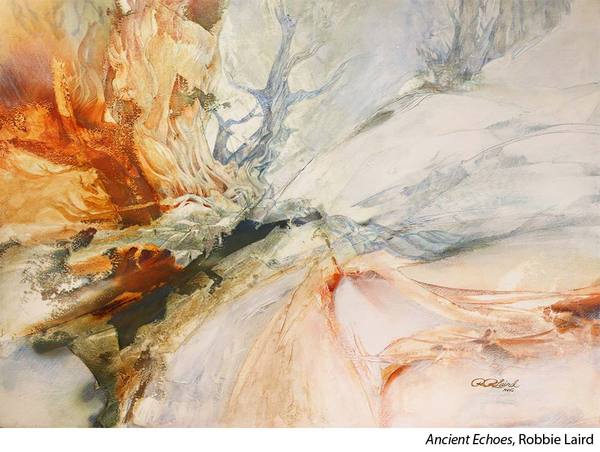
Robbie Laird, an innovative painter, teacher, and juror., is a full time resident of Lake Almanor, California, and part time resident of Hilton Head Island, SC. Her paintings captivate the viewer with an exciting balance of flowing ambiguity and varying amounts of specific detail. Using large brushes and flowing paint, her work dances on the edge of abstraction in areas but pulls you back in others. She sometimes uses the unique qualities of flowing transparent pure watercolor to create mysterious rhythmic works, while in other pieces she incorporates a variety of other watermedia. In addition to painting, she has expressed her vision in: forged metal and wood sculpture as well as leaded glass design and residential architecture. The continuing source of inspiration for Laird’s work is a lifetime interest in cycles and natural transitions and connections. Her paintings have received numerous awards in National and International exhibitions.



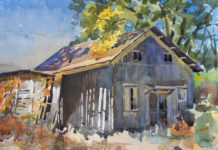




Amazing. I see correlations and connections in my own spirit. I am from SC, and live in NC. I would LOVE to meet you next time you are in Hilton Head. Any chance?
Amazing. I see correlations and connections in my own spirit. I am from SC, and live in NC. I would LOVE to meet with you next time you are in Hilton Head. Any chance?
This is incredible! I too love to try to do trees but when I’ve been happy with one I usually stop there and go on to something else. Now I have a new goal! What an incredible and inspiring series!
Thanks Margery! So gratified that my sharing is inspiring to you! This kind of sharing back and forth is what I love about connecting with other artists and extending each other’s visions. I’d love to hear from you again.
Robbie
I would love to do this with water, big ocean waves, angry ones! Somehow I would have to work in some mythical creature – oh now you’ve got me thinking!